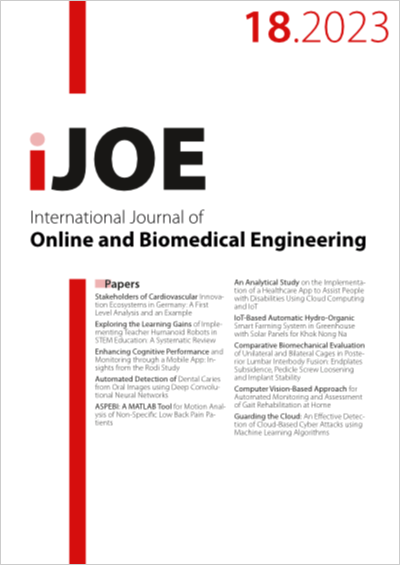Comparative Biomechanical Evaluation of Unilateral and Bilateral Cages in Posterior Lumbar Interbody Fusion: Endplates Subsidence, Pedicle Screw Loosening and Implant Stability
DOI:
https://doi.org/10.3991/ijoe.v19i18.43833Keywords:
Unilateral and bilateral cages, Posterior lumbar interbody fusion, Fracture risks assessmentAbstract
Implant sinking, pedicle screw loosening, and instability are commonly observed complications in posterior lumbar interbody fusion (PLIF) surgeries, attributed to a range of mechanical, biomechanical, and environmental factors. To address these challenges, the utilization of unilateral cages positioned obliquely, along with bilateral posterior instrumentation, and employing a material with a comparable modulus to cortical bone, has shown promising efficacy. The present study employed image-based finite element analysis (FEA) to evaluate the influences on cage sinking, screw loosening, and construct stability. The outcomes revealed that obliquely positioned unilateral fusion cage constructs with posterior instrumentation yielded superior biomechanical outcomes, characterized by reduced range of motion and stress distortion at the cage-endplate and screw-bone junctions. Furthermore, these findings indicated a lower risk of fractures and diminished deformations in normal and traumatic events. Hence, the utilization of biocompatible cage materials and structural symmetry holds critical significance for achieving biomechanical success in PLIF surgery.
Downloads
Published
How to Cite
Issue
Section
License
Copyright (c) 2023 Muhammad Hazli Mazlan, Nur Saliha Md Salleh, Muhammad Anas Razali

This work is licensed under a Creative Commons Attribution 4.0 International License.



